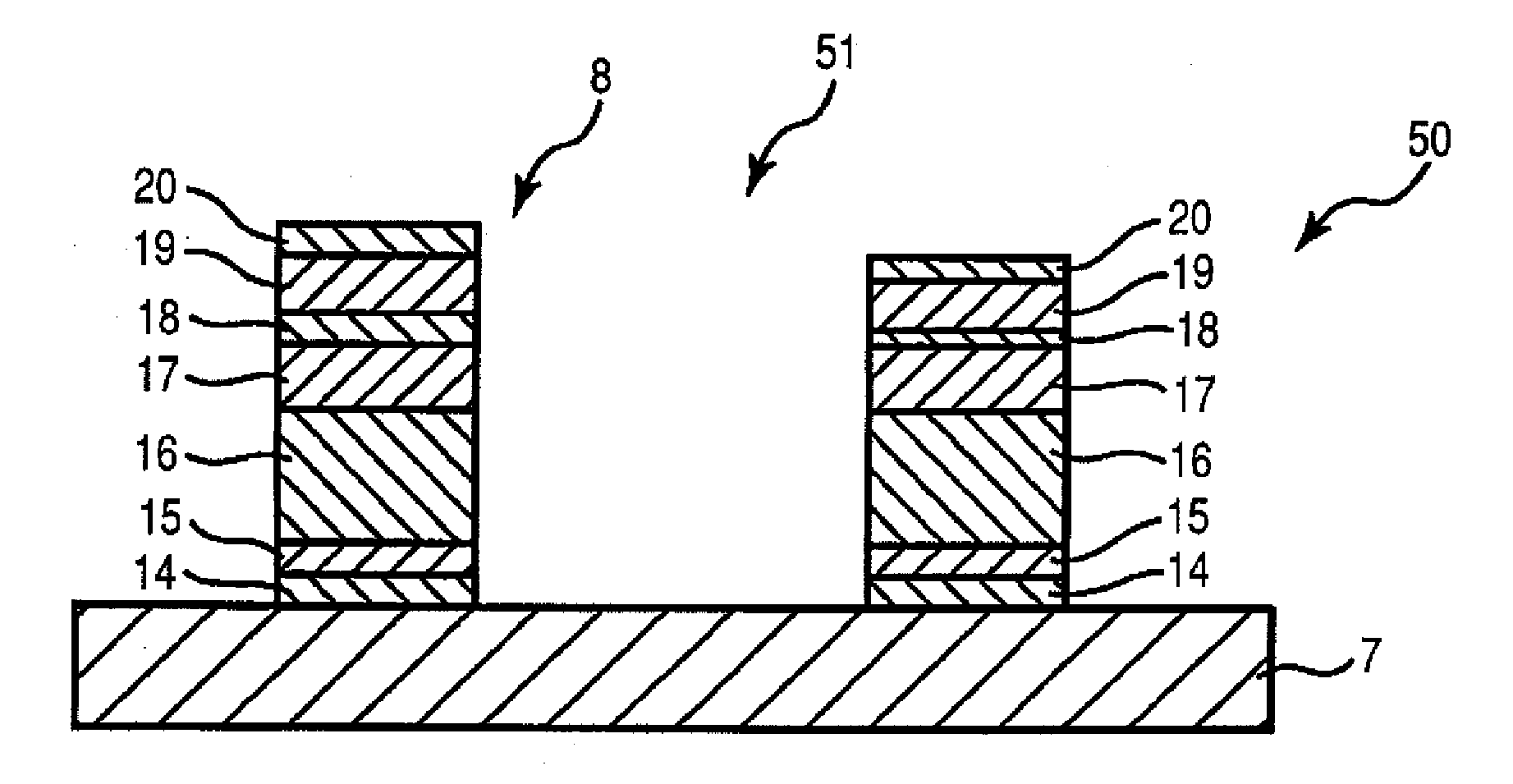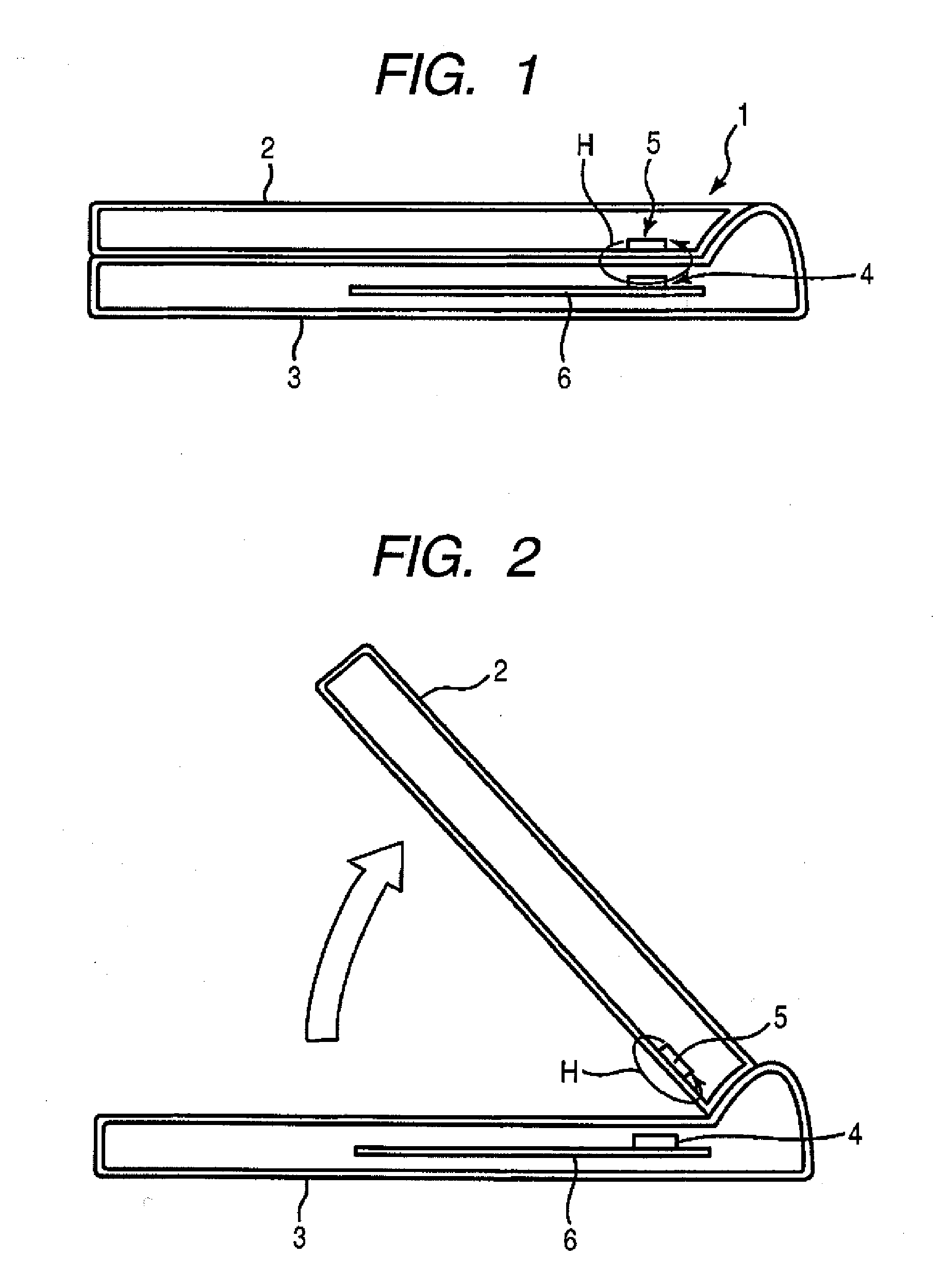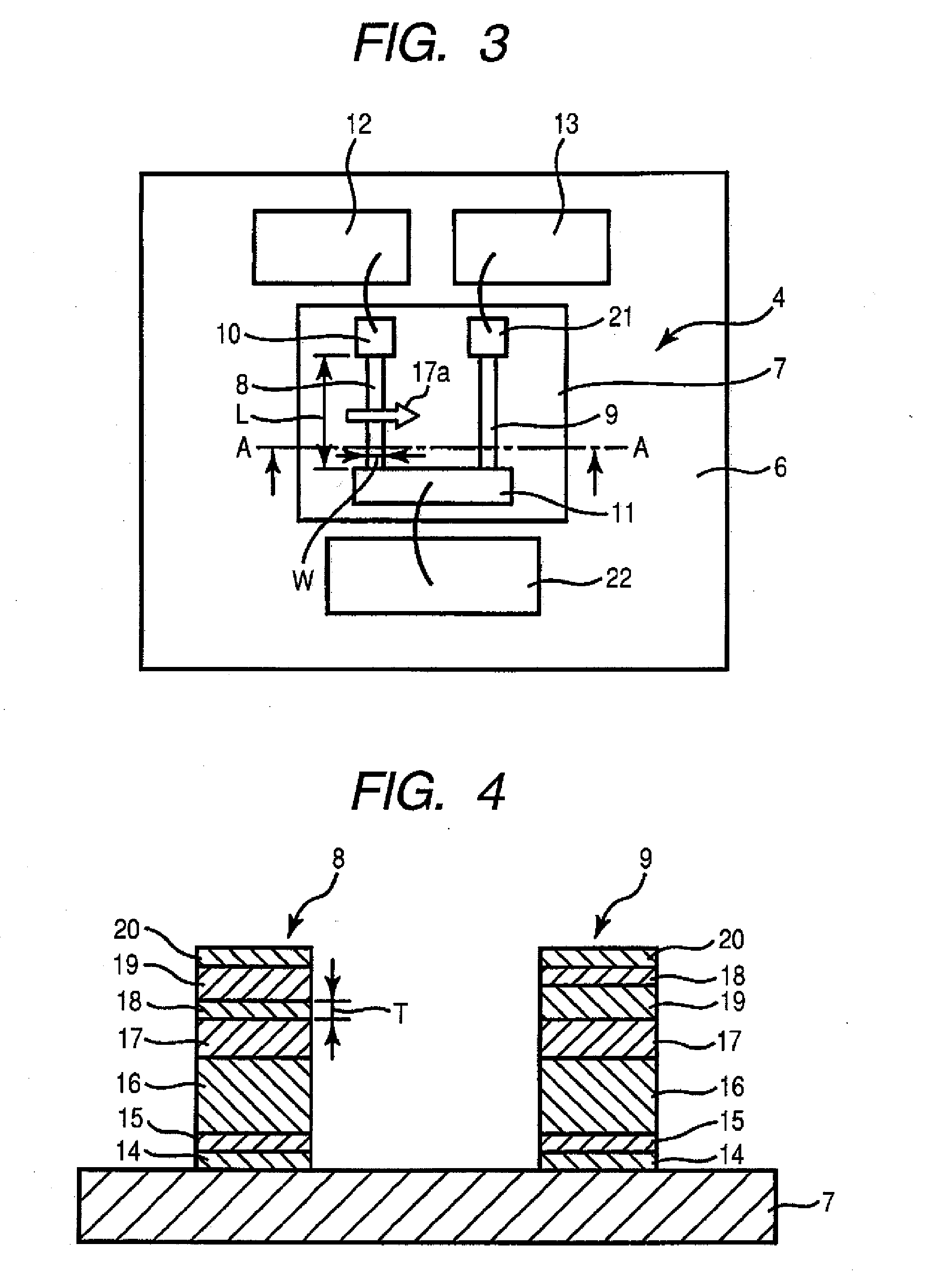Magnetic sensor with limited element width
a magnetic sensor and element width technology, applied in the field of noncontact magnetic sensors, can solve the problems of increasing the size the power consumption of the magnetic switch, and the inability to provide stable operation, so as to achieve stable operation and easily control the magnetic sensitivity
- Summary
- Abstract
- Description
- Claims
- Application Information
AI Technical Summary
Benefits of technology
Problems solved by technology
Method used
Image
Examples
examples
[0089] By using the magneto-resistance element 8 of a line shape illustrated in FIG. 3, a relation between the element width W and the coercive force Hc of the free layer 19 was researched.
[0090] A film configuration of the magneto-resistance element 8 using in the experiment was sequentially laminated from the bottom of a seed layer: NiFeCr / an anti-ferromagnetic layer: IrMn / a fixed layer: [FC30at % Co70at % / Ru / CoFe] / a non-magnetic layer: Cu / a free layer: [CoFe / NiFe] / a passivation layer: Ta. After forming films of the magneto-resistance element 8, a heat process under a magnetic field was performed to thereof so as to fix the magnetization direction of the fixed layer in one direction. The free layer was formed of CoFe having a thickness of 10 Å and NiFe having a thickness of 30 Å.
[0091] According to the experiment, a relation between the element width W at the time when the element length L of the magneto-resistance element 8 was changed in the range of 50 μm to 250 μm and the co...
PUM
| Property | Measurement | Unit |
|---|---|---|
| width | aaaaa | aaaaa |
| length | aaaaa | aaaaa |
| coercive force Hc | aaaaa | aaaaa |
Abstract
Description
Claims
Application Information
 Login to View More
Login to View More - R&D
- Intellectual Property
- Life Sciences
- Materials
- Tech Scout
- Unparalleled Data Quality
- Higher Quality Content
- 60% Fewer Hallucinations
Browse by: Latest US Patents, China's latest patents, Technical Efficacy Thesaurus, Application Domain, Technology Topic, Popular Technical Reports.
© 2025 PatSnap. All rights reserved.Legal|Privacy policy|Modern Slavery Act Transparency Statement|Sitemap|About US| Contact US: help@patsnap.com



